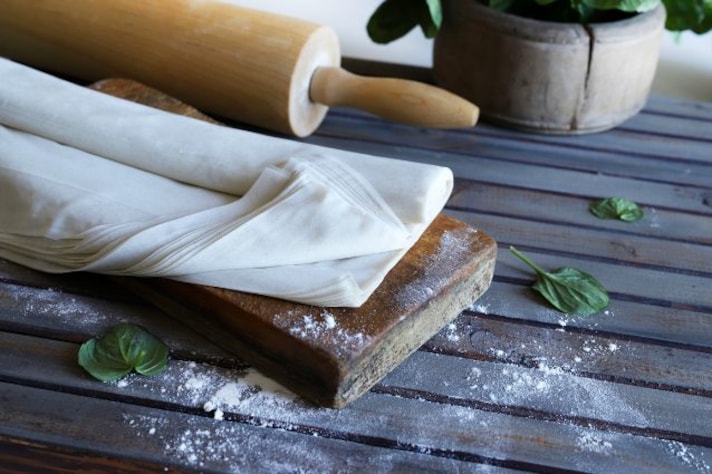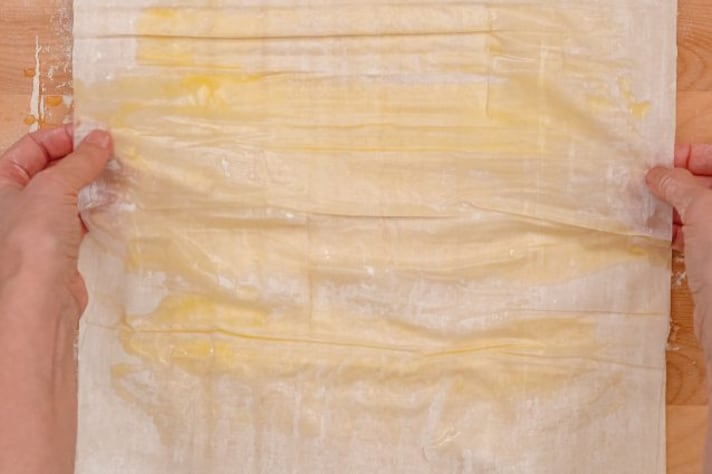
Phyllo dough, a paper-thin pastry known for its delicate, flaky layers, is famously tricky to handle. Even fresh from the fridge, phyllo can tear, crack, or dry out, making it a dough that demands care and patience. When frozen, it’s even more vulnerable, so using it straight from the freezer is a definite no-go. But if frozen phyllo isn’t usable as is, what’s the right way to thaw it? While thawing is essential, room temperature is not the place for this process, for several important reasons.
The Enemy of Crisp Layers
Allowing phyllo dough to thaw at room temperature can spell disaster for its delicate structure. As it defrosts in warmer air, condensation forms on the paper-thin sheets, causing them to turn soggy. Instead of achieving that prized crispness in the oven, phyllo treated this way will bake up limp and lackluster. For dough that’s meant to bring a shattering crunch, excess moisture is the ultimate downfall.

Phyllo’s Fragile Reality
Room-temperature thawing doesn’t just risk sogginess; it also leaves phyllo dough more prone to tearing. As the dough warms up unevenly, certain parts may thaw faster than others, creating soft spots that easily tear. With phyllo’s famous fragility, even slight inconsistencies can lead to cracks and rips. Working with dough that’s partially melted and partially frozen can quickly turn into a nightmare for home bakers aiming for those picture-perfect layers.
A Race Against Time
Phyllo dough is a notorious moisture-sponge, which means that as soon as it begins to warm up, it starts to dry out as well. Thawing at room temperature speeds up this process, leading to sheets that crumble instead of bend. The longer it sits out, the drier it becomes, leaving you with brittle layers that are almost impossible to handle. Dry phyllo is a recipe for cracked sheets and uneven baking—a surefire way to ruin a perfectly good batch of dough.

The Right Way to Thaw Phyllo Dough
To preserve phyllo’s delicate texture, thaw it gradually in the refrigerator. Place the frozen dough package in the fridge overnight, allowing it to thaw evenly and slowly without any moisture buildup. For an extra layer of protection, keep the thawed dough wrapped until ready to use, and have a damp towel nearby to cover it as you work. This keeps each sheet pliable, manageable, and ready to transform into a flaky masterpiece.
;Resize,width=767;)
